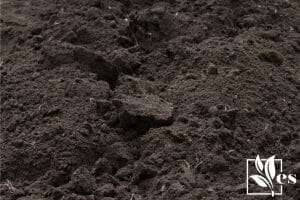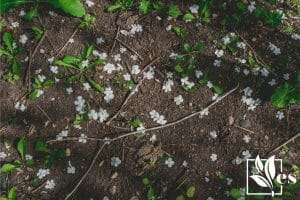 To firm up soft ground you have to first make sure the soil is of good quality and hence, resilient.
To firm up soft ground you have to first make sure the soil is of good quality and hence, resilient.
Moreover, soft ground can make or break the progression of your existing garden or any plans for expansion.
Therefore, should always be a balance in the characteristics and elements of the ground. When you have a soggy backyard, there is a need to firm up muddy ground in your lawn, and we are here to help you do just that in our article!
JUMP TO TOPIC
How To Firm Up Soft Ground: Understanding the Process
To fix a soggy yard, or to start the process and dry up a wet yard, it is very important to understand the process that needs to be done in order to successfully firm up the ground and make it a viable piece of land to prevent further plant erosion or nutrient loss.
When a yard is always wet and muddy, not only does it not look good, but it also compromises future use, whether for manicured gardens or landscaped lawns. So, to firm up soft ground, the best approach is to address the underlying layer of soil and reinforce it with a moisture-regulating media, such as compost or peat. Just make sure that the type of soil you have used does not already have these characteristics.
These are the methods we are going to be analyzing later in our article, but let’s start with explaining the natural state of the ground along with defining what peat and compost are.
– What is the Ground Composed Of?
In its natural form, the ground is composed of dirt, rocks, and other particulates that complete its texture. However, the composition depends on location or region and what has been done in the past.
There are some places where the ground is more clayey or sandy, while some areas are more blessed with balanced and loamy ground. Nonetheless, we live in an era where we have all the components on how to enhance the existing integrity and composition of the ground despite its already-existing state.
– What Is Peat?
Peat refers to decayed plant matter and is usually found in bogs or wetlands. In the gardening world, peat is closely associated with a wonderful family of mosses called Sphagnum. What makes this “peat moss” exceptional is its capacity to retain water.
When the ground is naturally clayey or muddy, it means that the composition is taking greater water volume than it can actually retain. This is where the magic of peat comes.
When peat is used on soft ground, not only does it enhance the nutrient matrix of the ground itself, but it also improves its capacity to hold water. This is applicable whether your ground is muddy, sandy, or loamy but with compromised quality.
Furthermore, peat stabilizes ground consistency, and it also loosens compacted ground as it helps harden muddy soil without making it excessively hard.
This is the primary reason why peat moss is highly revered to be one of the most important materials in the gardening scene, as it corrects, balances, and retains. What’s not to like?
– What Is Compost?
Compost is a mixture of materials and ingredients that helps improve the soil in terms of its nutritional composition. It is often made up of decomposing food waste, plant matter, organic materials, and even manure.
The finished product of the composting process is dense in beneficial microorganisms and nutrients that help provide nourishment for any garden or lawn.
When compost is combined with peat to help enhance the structural integrity of the soil, it serves as a one-two punch because peat takes care of the moisture overload while compost takes care of the nutritional deficiency.
Soil that is clayey or muddy consistently is oftentimes lacking in nutritional value because of its “runny” nature that prevents proper absorption within the plant roots.
On the other hand, sandy soil that is wet does not help much either, because the grainy texture prevents proper anchoring and nutrient distribution. It is also the type of consistency that is not well-received by common plants and trees we see in lush gardens.
Steps To Firm Up Soft Ground
Improving the consistency of soft ground is actually quite easy, although the process must be taken very seriously in order for it to work. Keep reading as we take you through each of the steps necessary to achieve this.
– Restrict Watering to Firm Up Soft Ground
Since we are trying to gain full control of the existing moisture that is in the ground, and if we are starting from really soggy soil, then we first need to restrict the water that goes into the ground. You can use any water you want, including tap water (make sure to purify it).
Check for leaky faucets that introduce more water into the ground and that prevent it from firming up. In fact, leaky faucets, sprinklers, or hoses with overlooked tears and holes do more harm than it seems, because the consistent water flow, even in small streams or drops, compromises soil quality and makes everything soggy or muddy.
– Determine Possible Provisions for Improved Drainage
You should also observe external factors beyond the soil itself. This is essential when tackling soil on a big lawn or garden, and even potted plants, too! Drainage is as important as the soil itself. Poor drainage encourages water stasis, which in turn can promote rotting or harboring of unwanted microorganisms or diseases.
Always check for clogs caused by stones, clumps of soil, or other materials that impede proper water drainage. You’ll be surprised that some gardening problems are caused by something as simple as a drainage clog.
Speaking of drainage, you should also take into consideration the regional seasons and weather. If you’re in an area that receives more rain than usual, then drainage is really something you have to put considerable effort into, because the season is already against you. Drier regions are luckier in that external precipitation factors are not much of a consideration.
– Identify the Consistency That Your Garden or Lawn Requires
While the common goal here is the correction of soil consistency, it is very important to ensure that the density you are aiming for is correct. There are plants, shrubs, and even trees that prefer a very distinct consistency that is needed to help them thrive and live well. Keep in mind that the correct soil components play an important role in the overall ground consistency as well.
Advantages of a Firm Soil
 When your lawn, garden, or potting soil is firm and full of nutrients, you are doing your plants, shrubs, and trees a favor toward long-lasting life.
When your lawn, garden, or potting soil is firm and full of nutrients, you are doing your plants, shrubs, and trees a favor toward long-lasting life.
Once you get the correct consistency and have fertile soil at your disposal, you gain a series of advantages in your pursuit to be a successful lawn or garden owner.
The following are those benefits that you will surely experience once you firm up your garden’s soil:
– Vitality and Fertility
When the soil is properly firmed up and enriched using peat and compost, plants in the lawn, garden, and pots are guaranteed to have vitality. This will reward you with amazing and healthy-looking plants not typically thriving in a potting medium before firm up soft soil is achieved. You can also use a fertilizer, such as the 0-0-60, to further enrich your soil.
– Better Anchor to Plant Roots
Contrary to popular belief that a loamy and slightly loose soil is not a good thing, it is actually a good medium where the roots can sprawl and anchor properly.
Compared to muddy and sticky soil as well as sandy soil, a firm yet slightly loose soil is perfect for promoting root growth and plant vigor. When there is a better anchor, there is less erosion and drainage is well-controlled too.
– Fewer Plant Diseases
When a soil or potting medium holds too much water, various plant diseases and abnormalities can emerge. This can not only compromise the affected plants’ health, but it can also accelerate root rot, promote the growth of molds and bacteria, and attract insects that love a moist or wet environment.
Therefore, the firm soil will prevent those molds and bacteria from evolving and inevitably destroying your beloved plants.
– Less Mess
This is quite obvious. When you have terribly soggy soil, it will cause such a mess because it sticks to almost anything and can leave unsightly stains. A firm yet loose soil is easier to clean and dust off when it gets on your clothes, shoes, or even on your porch.












